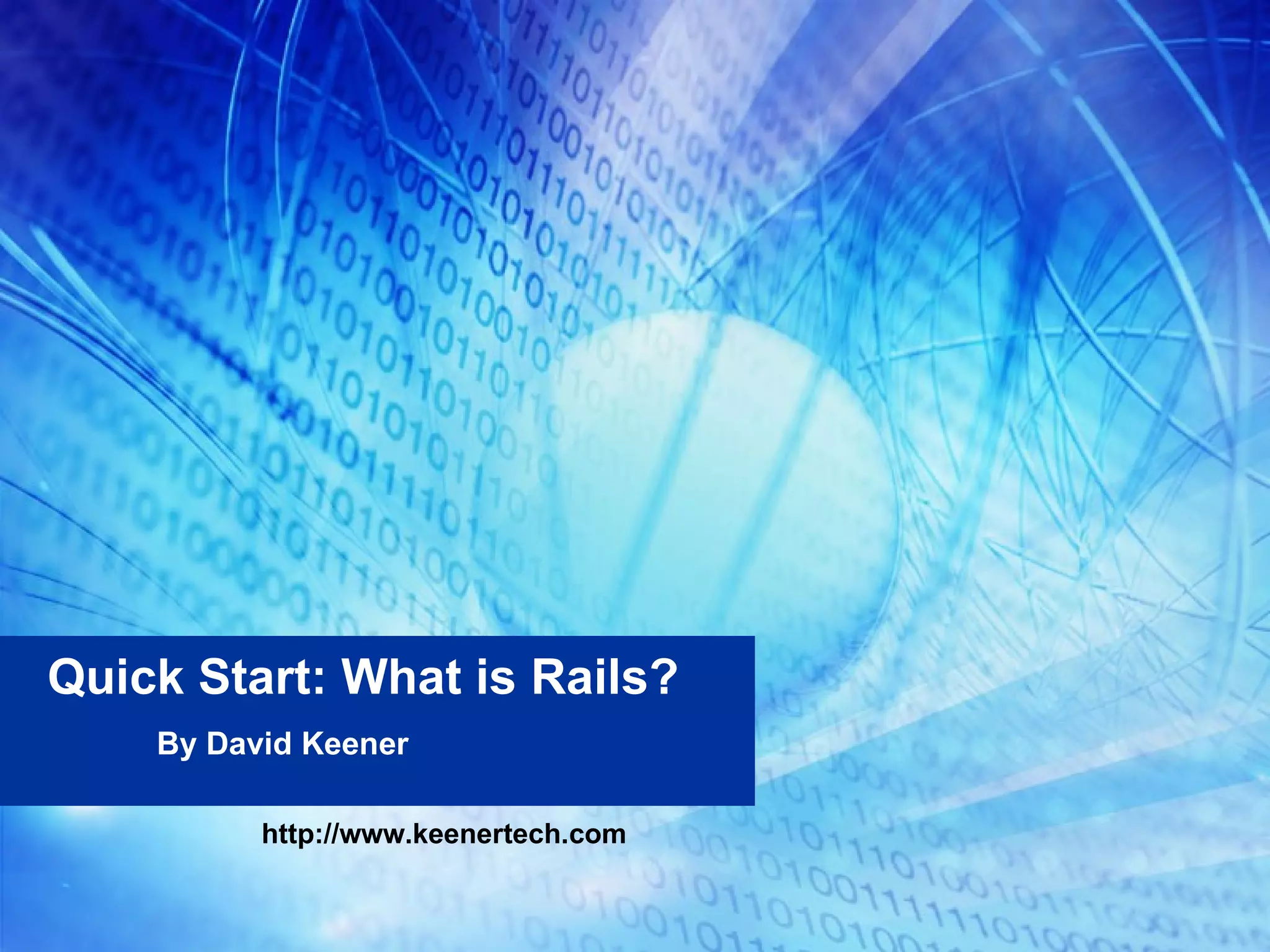
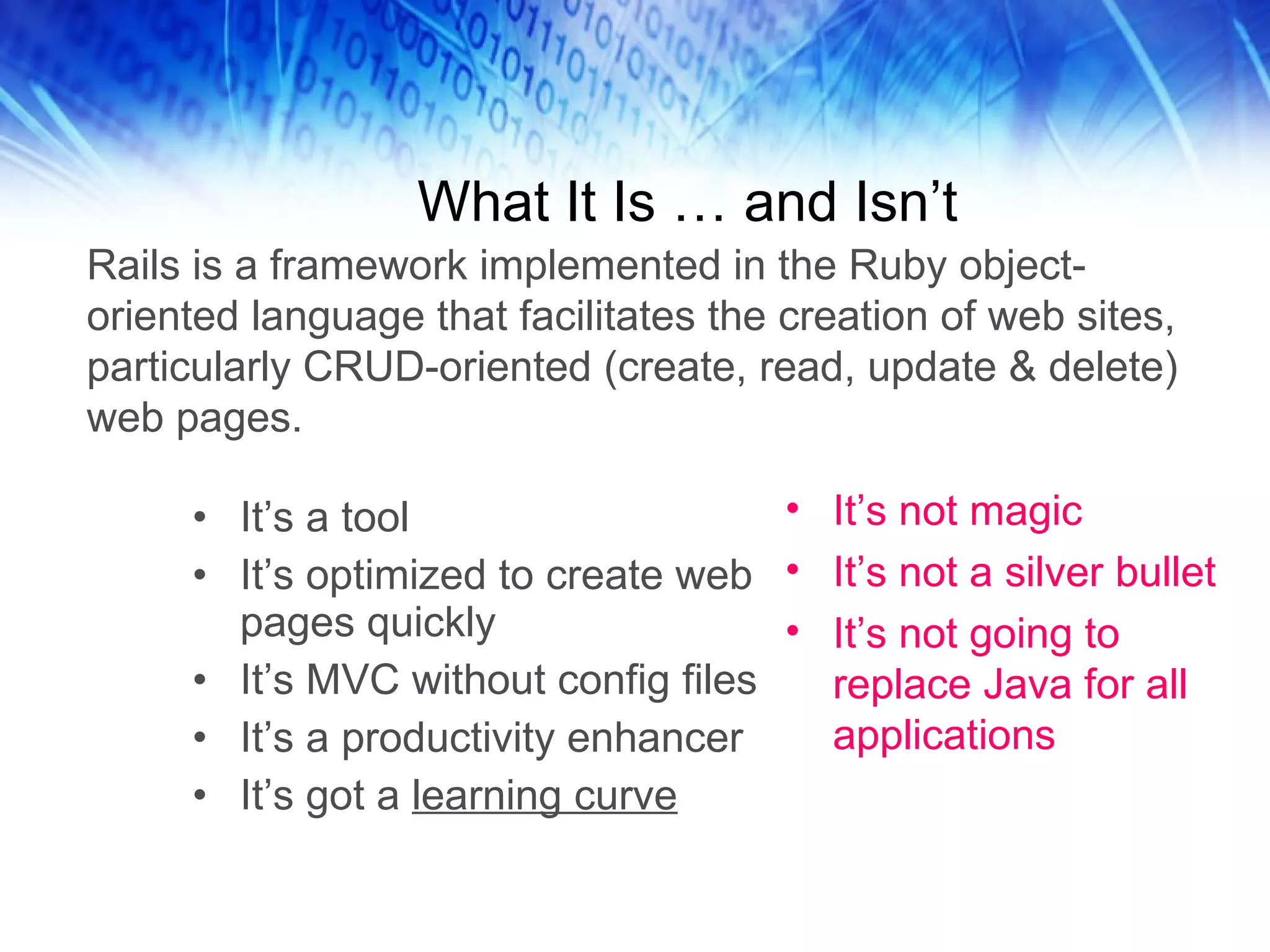
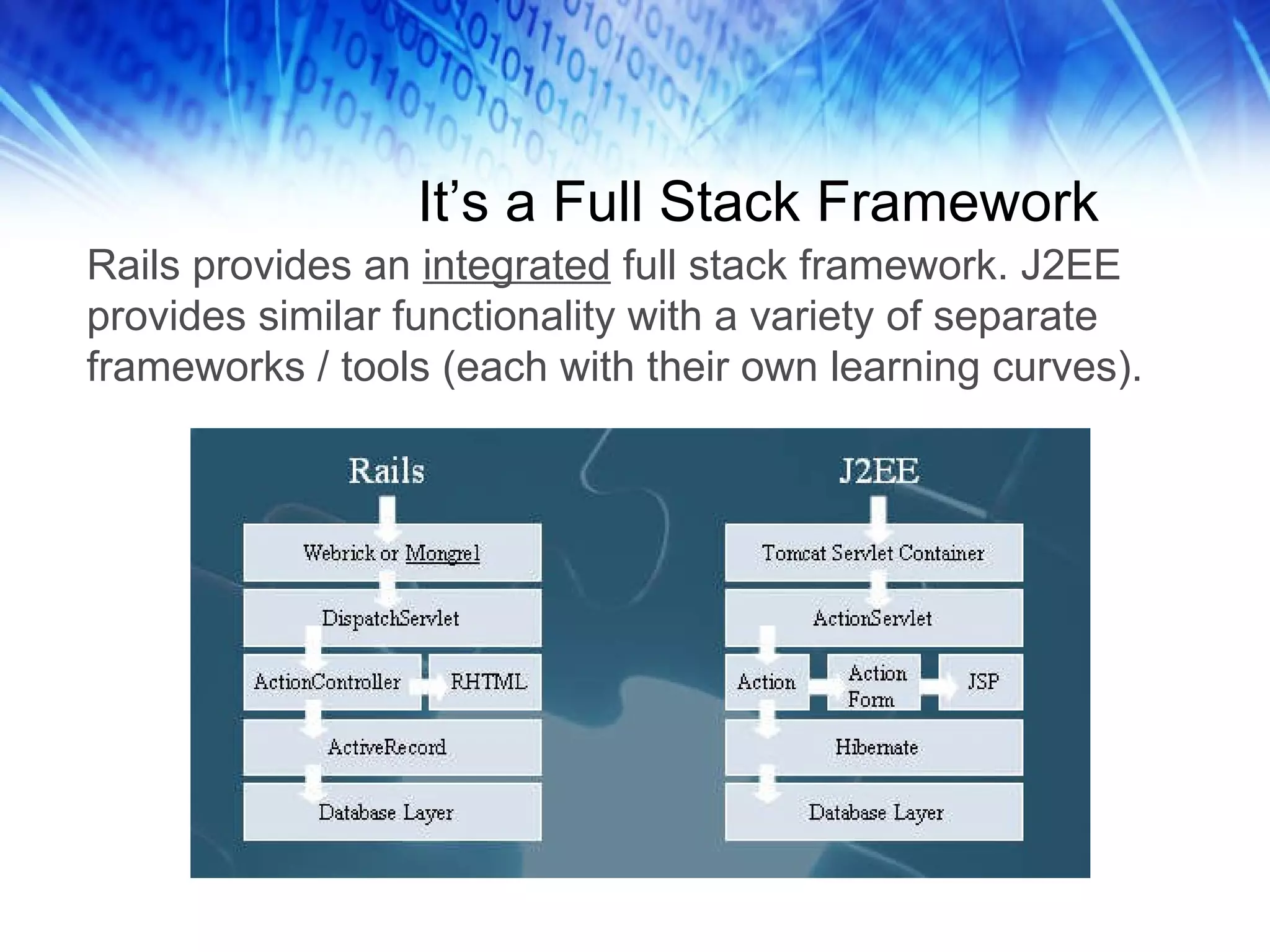
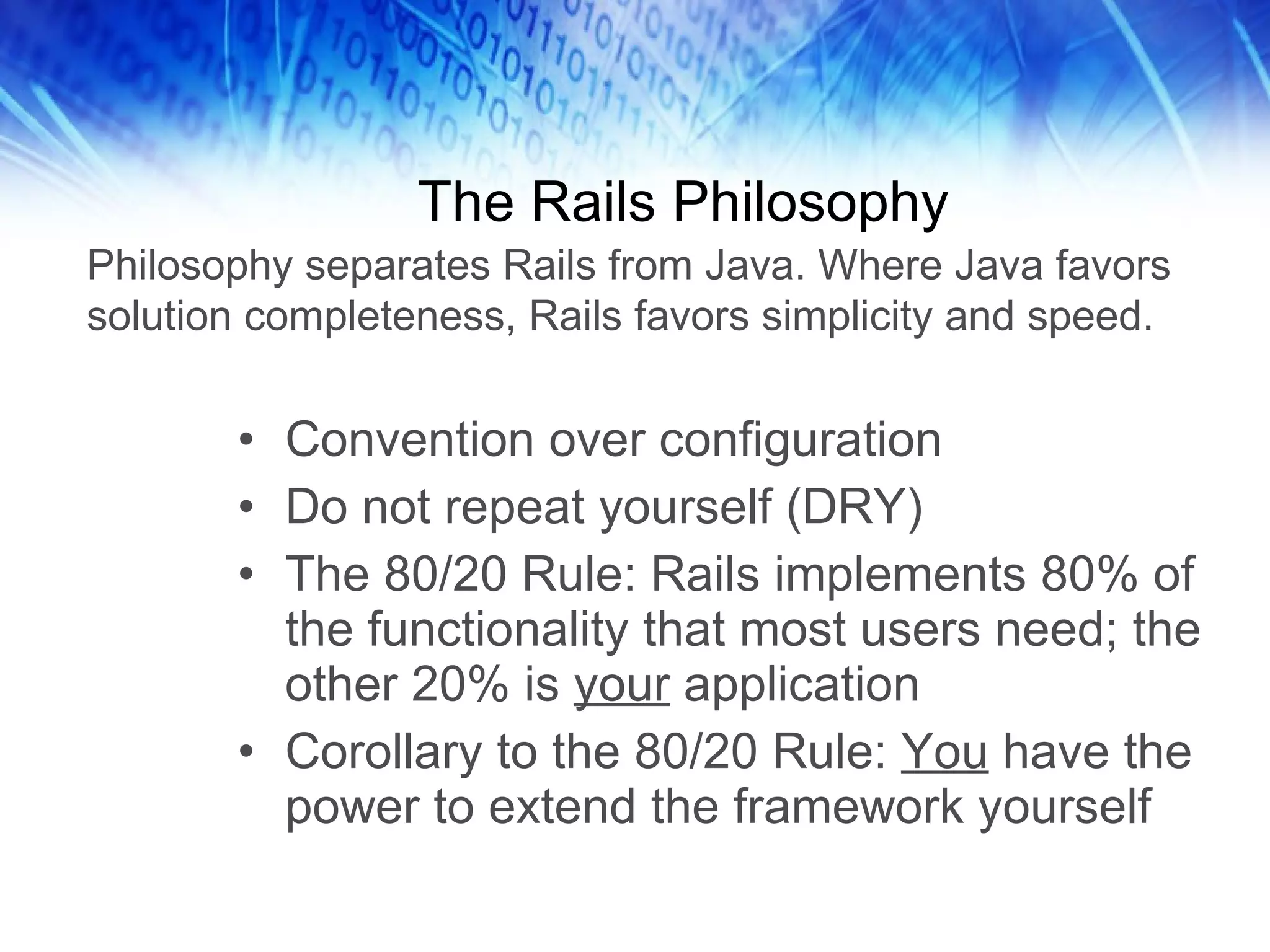
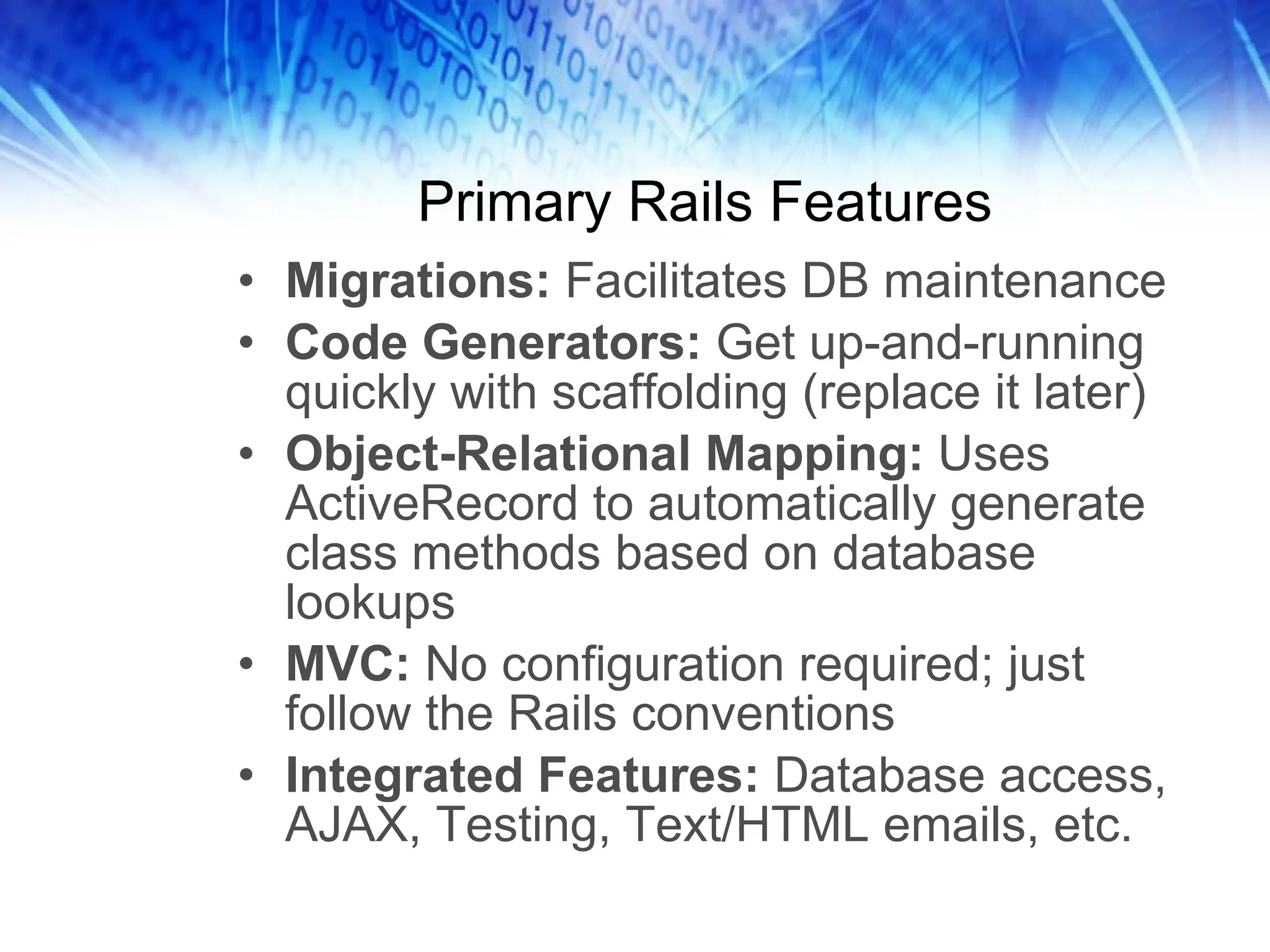
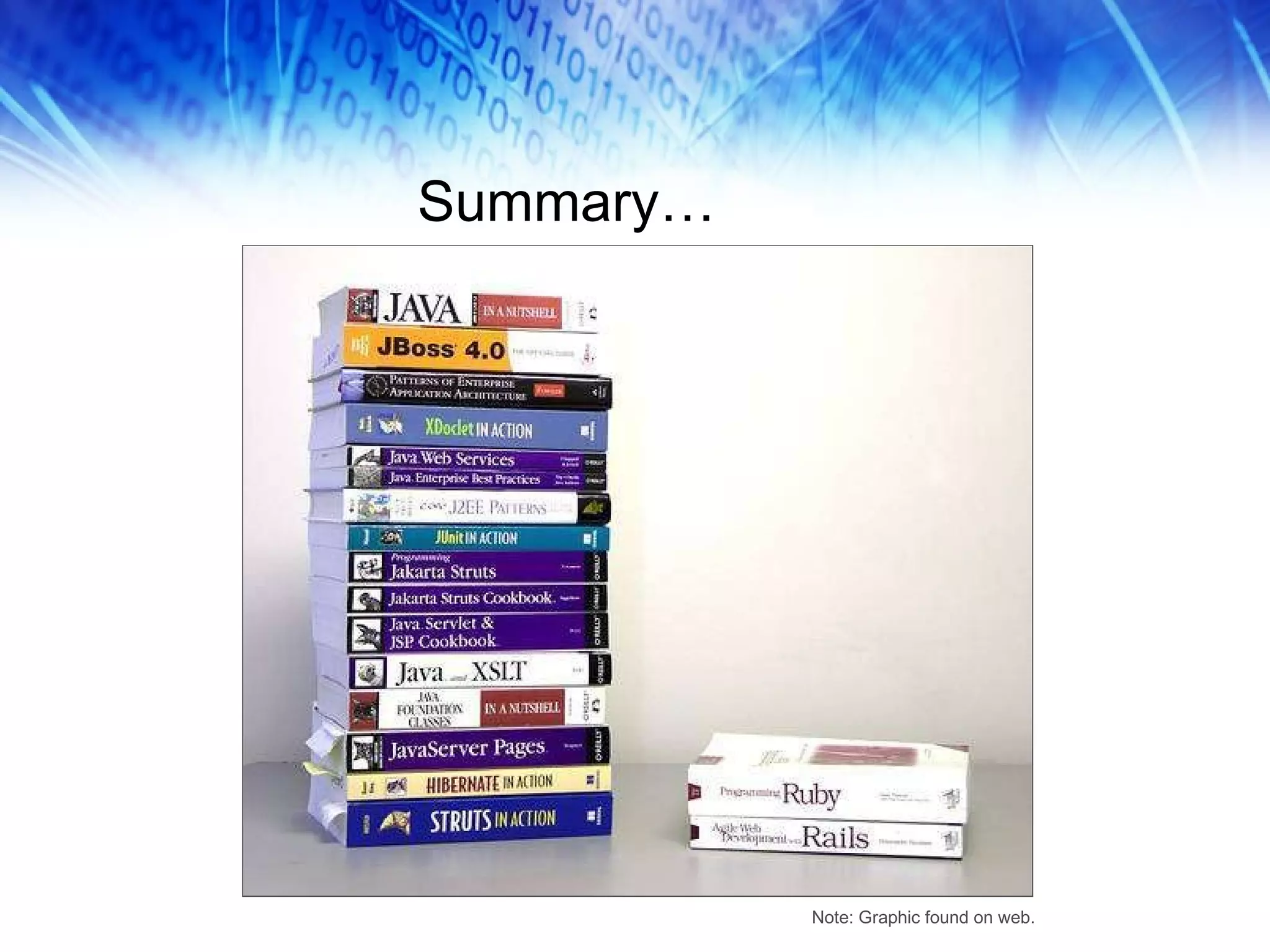

Rails is a web application framework implemented in Ruby that streamlines the creation of CRUD-oriented web pages through its MVC structure without the need for extensive configuration. It emphasizes principles such as convention over configuration and the DRY (Don't Repeat Yourself) philosophy, making it a productivity enhancer despite its learning curve. Key features include database migrations, code generators, and integrated functionalities like database access and testing.





